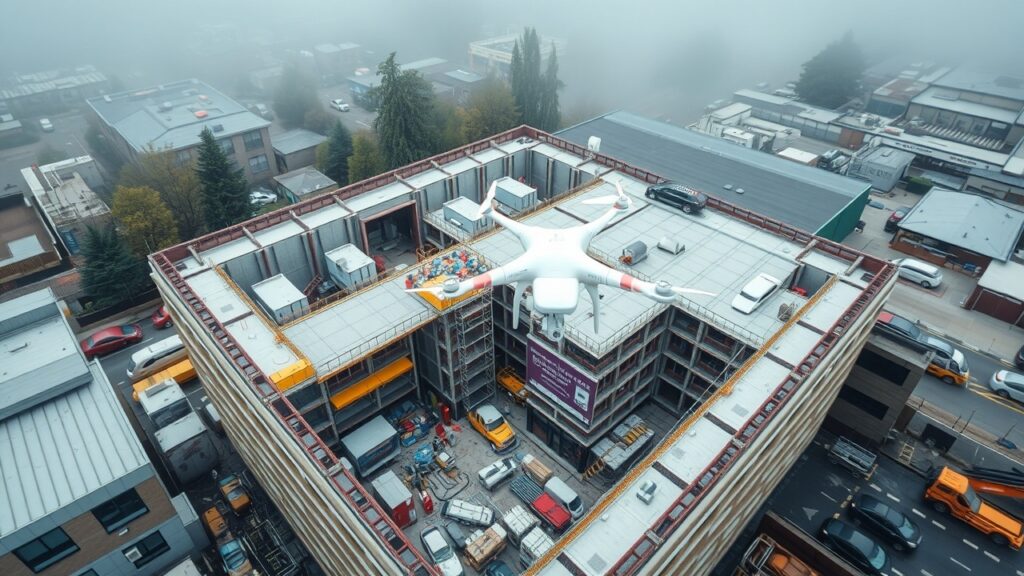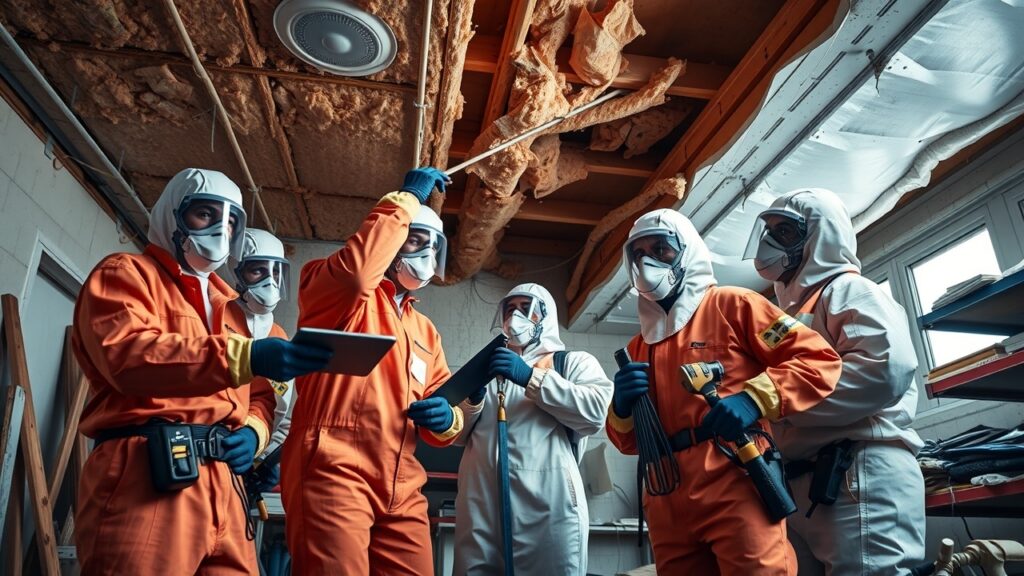Emergency Asbestos Removal and Hazardous Materials Services by Capstone Civil Group
When you need reliable emergency asbestos removal and hazardous materials services, Capstone Civil Group is here to help. Our team follows strict safety protocols for effective remediation and environmental cleanup of contaminated sites.
Immediate Response to Asbestos Emergencies
24/7 Emergency Asbestos Removal Services
In an asbestos emergency, a fast response is vital. Delays can increase health risks for anyone exposed to asbestos fibers. Capstone Civil Group knows the urgency and offers 24/7 emergency asbestos removal services. Our certified team is ready to act quickly, ensuring your site is safe from hazardous materials in no time.
- Always available
- Quick deployment of trained professionals
- Thorough assessment upon arrival
- Coordination with local authorities
Rapid Assessment and Containment Protocols
A quick initial assessment helps manage potential exposure during an asbestos incident. We evaluate contamination levels and determine containment measures to protect public health.
- Initial Site Inspection: Find areas where asbestos might be present.
- Risk Evaluation: Look at potential hazards based on the building’s condition.
- Containment Setup: Set up barriers or isolation methods right away.
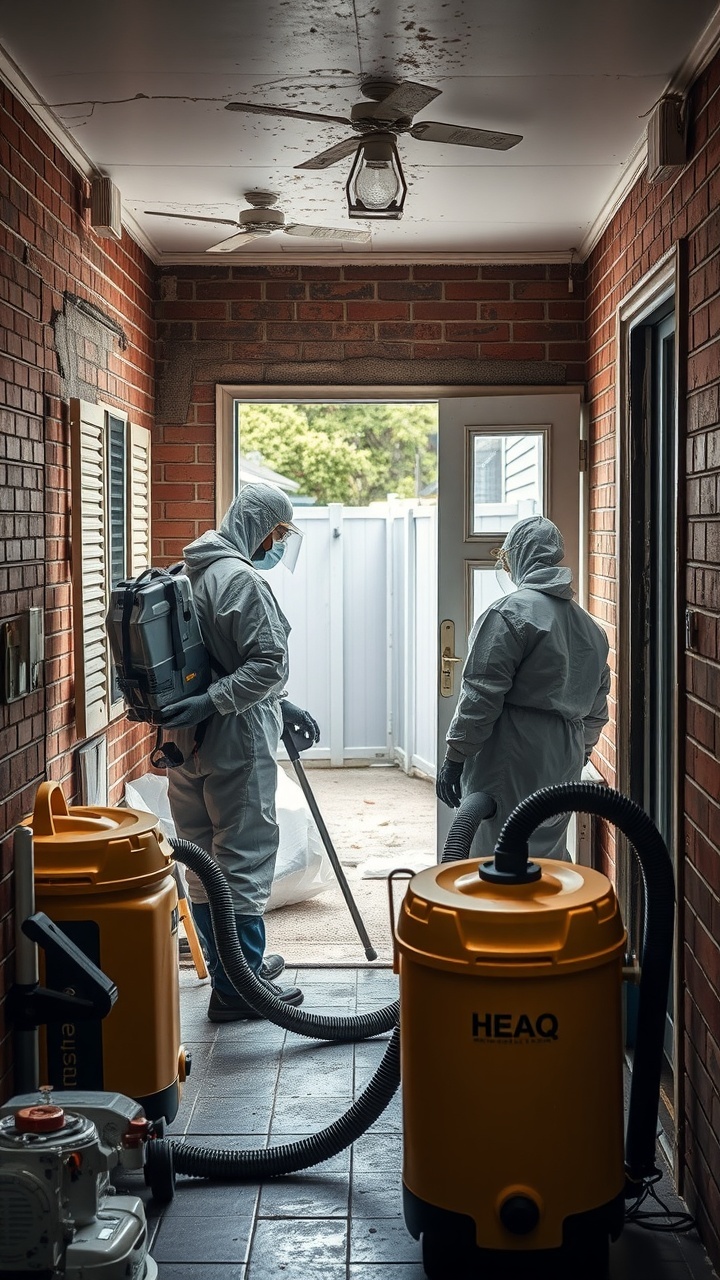
Professional Asbestos Removal Process
Initial Site Inspection and Risk Assessment
The initial site inspection is vital in the asbestos removal process. This detailed examination helps identify potential asbestos-containing materials (ACMs). Trained professionals evaluate these materials and assess their risk based on factors like location, type, and disturbance likelihood.
Key risk factors assessed during this stage include:
- The age of the building.
- Past renovations that may have disturbed ACMs.
- Areas showing visible damage where asbestos might be present.
This careful approach ensures that all hazards are spotted early, enabling effective planning before any removal starts.
Asbestos Sampling and Laboratory Analysis
Accurate sampling is essential for determining the presence and concentration of asbestos fibers. In this phase, trained staff collect samples from suspected materials using safe handling procedures to avoid contamination.
Once gathered, samples are sent to accredited laboratories for thorough analysis. These labs use various methods to determine fiber content and type. Understanding these results guides the subsequent removal strategies. Clients need to see how accurate sampling affects safety and compliance with local regulations regarding hazardous materials management.
Comprehensive Asbestos Removal Strategies
Several strategies are employed to safely remove identified ACMs. Techniques vary depending on factors like material type and location within a structure.
- Wet Removal Method: This technique involves saturating ACMs with water or a wetting agent before removal, minimizing airborne particles.
- Dry Removal Method: Used when moisture could cause further damage; extra caution is required due to higher dust generation risks.
Types of Hazardous Materials We Handle
At Capstone Civil Group, we manage various hazardous materials beyond just asbestos:

Lead-based Paints
Toxic if ingested or inhaled. Careful handling is essential during renovations or demolitions to prevent exposure.

Chemical Solvents
Flammable liquids that pose significant fire risks. Proper storage and handling are crucial for safety.
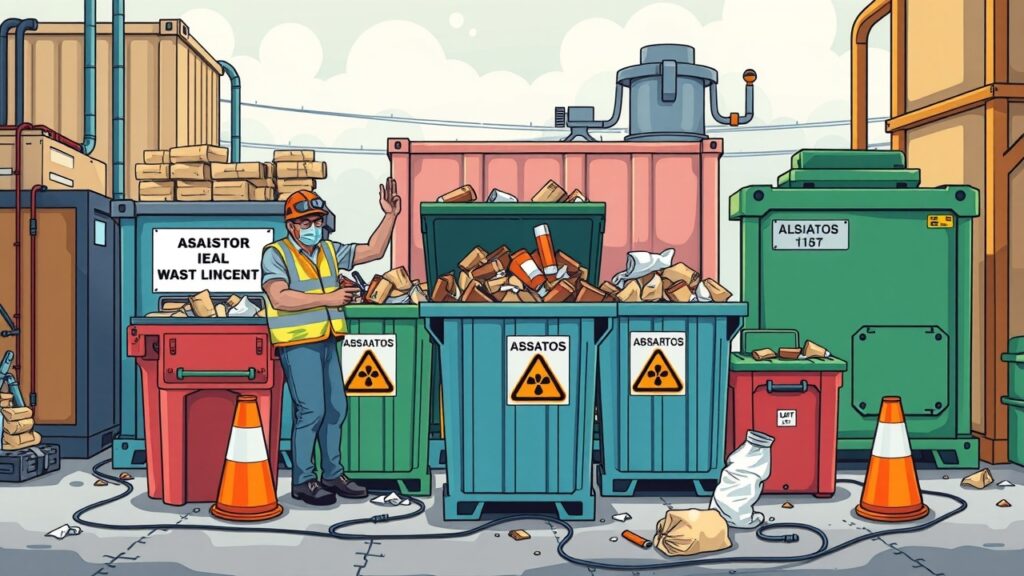
Biological Waste
Requires special protocols due to its infectious nature. Only trained personnel should handle this type of waste.
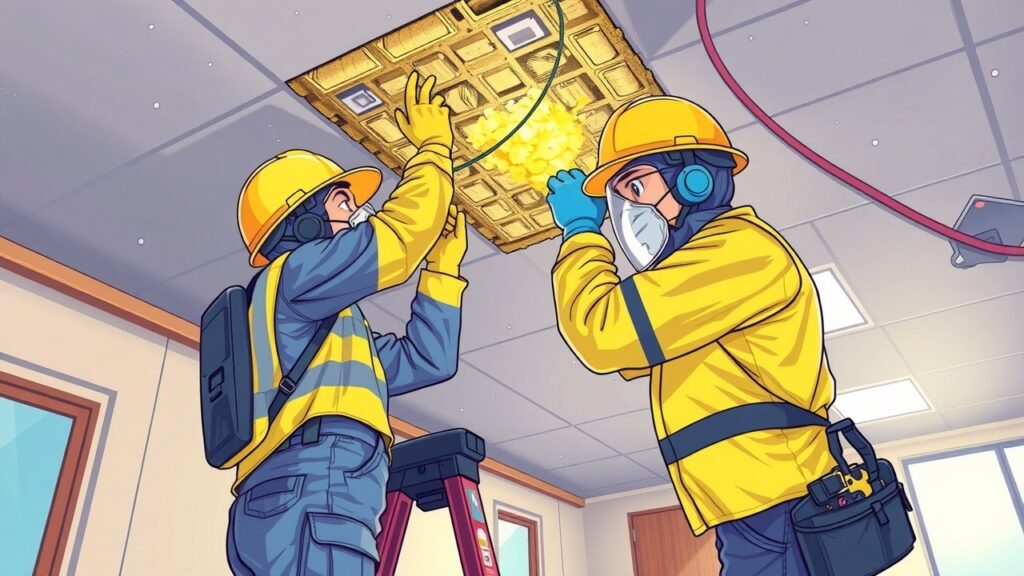
Asbestos
Known for its harmful effects when inhaled, requiring careful removal and disposal procedures.
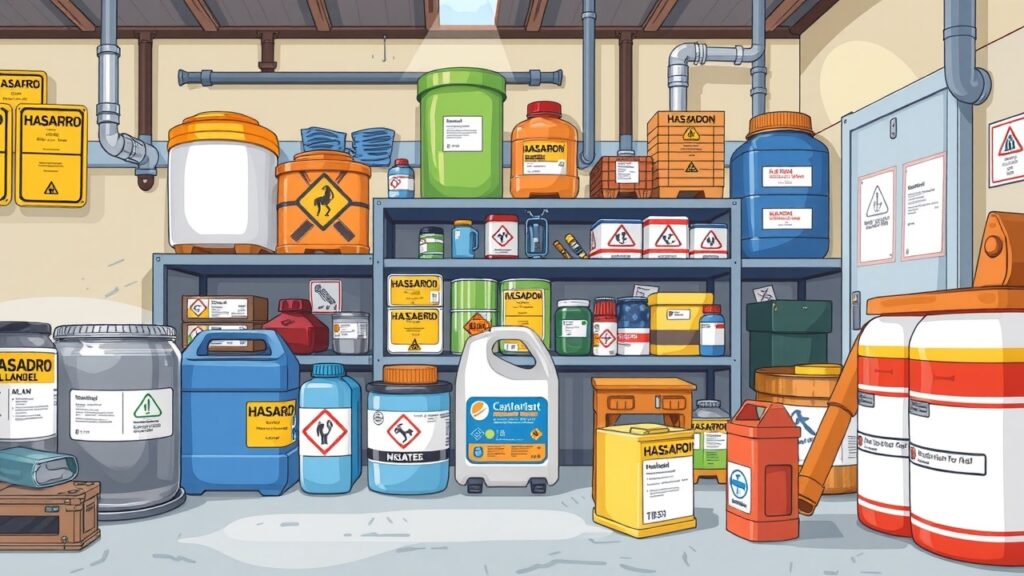
Industrial Chemicals
Often corrosive or reactive, needing specific containment and handling procedures to ensure safety and compliance.
Advanced Chemical Analysis Services
On-Site Chemical Identification
Fast identification of hazardous materials is key in emergencies. Capstone Civil Group uses advanced tools like portable gas chromatographs and mass spectrometers for accurate on-site chemical identification. Quick analysis reduces risks linked to exposure to unknown substances. This allows timely decisions about containment or removal strategies, ensuring environmental safety and effective toxic substance management.
Interpretation of Results and Risk Assessment
Understanding lab results is essential for determining the next steps in mitigation or remediation. At Capstone, our experts prepare detailed reports outlining health risks linked to detected chemicals or contaminants. Through careful risk assessments tailored to each case, we create effective response plans focusing on both occupational health and public safety.
How Accurate Analysis Prevented a Major Hazard
In a significant case near Fremantle, an industrial site was flagged for suspected contamination from past manufacturing activities. Our chemical analysis revealed high lead levels in soil samples. By addressing this promptly with targeted cleanup before construction began, we successfully reduced public health risks, showcasing the necessity of accurate chemical analysis.
Safe Handling and Transportation of Hazardous Materials
Handling hazardous waste requires strict adherence to protocols that maintain public health standards while protecting workers at every stage—from collection through transport to final disposal. Our specialized team members undergo extensive training focused on best practices for managing potentially dangerous substances in various industries.
Essential equipment used includes:
- Secure containers designed to prevent leaks or spills.
- Transport vehicles meet stringent guidelines, ensuring safe conditions during transit regardless of the distance traveled.
Environmentally Responsible Disposal Methods
At Capstone Civil Group, we pride ourselves on our commitment to environmentally responsible practices concerning hazardous waste disposal generated by projects. We actively seek innovative solutions aimed at reducing ecological footprints while strictly adhering to national laws governing toxic substance cleanup initiatives.
Our eco-friendly approaches include:
Recycling whenever feasible, contributing back to sustainable resource cycles.
Partnering with reputable facilities certified to process materials needing additional treatment beyond traditional landfill options, thus preserving natural habitats surrounding affected sites whenever possible.
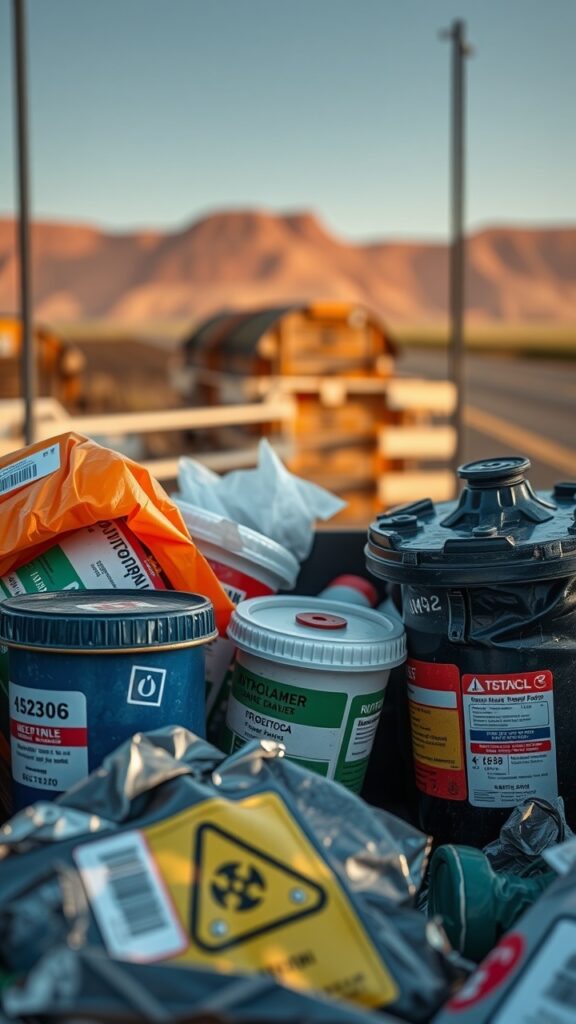
Radioactive Material Removal and Management
Specialised Handling of Radioactive Substances
Handling radioactive materials needs special care due to their dangers. Capstone Civil Group follows strict training protocols so all personnel are well-informed about safe handling procedures for these substances. Safety is paramount, with measures that include:
Equipment Use: Personnel wear protective gear designed specifically for environments with radioactive materials, ensuring maximum safety during operations.
Specialised Training: Our team receives extensive training focused on radiation protection principles.
Workplace Safety and Training Programs
Comprehensive Hazardous Materials Training
Training on hazardous materials is key to workplace safety. At Capstone Civil Group, we believe that well-prepared staff can reduce risks linked to toxic substances. Our training focuses on essential topics like safe handling, emergency responses, and meeting safety regulations.
Key areas in our training include:
- Identification of Hazardous Materials: Learn about the various hazardous materials found in your work environment.
- Health Risks of Asbestos and Other Toxic Substances: Understand the health implications of exposure.
- Personal Protective Equipment (PPE) Usage and Maintenance: Know how to use and care for PPE correctly.
By providing thorough knowledge on environmental hazards and risk assessment strategies, we improve your team’s readiness for emergencies.
Customised Safety Protocols for Different Industries
Each industry faces unique challenges with hazardous materials. At Capstone, we develop custom safety protocols that address the specific needs of sectors like construction, manufacturing, and healthcare. This ensures all safety measures align with legal requirements and best practices in each area.
For example:
- Construction Sites: May need strict protocols for demolition activities.
- Healthcare Facilities: Require detailed guidelines for handling medical waste.
Our aim is to promote compliance while protecting public health through effective measures suited to specific environments.
Ongoing Education and Certification
Keeping up-to-date with hazardous materials regulations is essential for workplace safety. Capstone offers continuous education opportunities to ensure staff are informed about new legislation and best practices in toxic substance management.
We provide various certifications that enhance employee qualifications:
- Asbestos Inspection Certification: Validates skills in identifying asbestos risks.
- Hazardous Waste Disposal Certification: Confirms training in proper disposal methods.
These programs foster awareness around environmental safety issues while reinforcing a commitment to health standards at work.
Ensure Safety & Compliance with Emergency Asbestos Removal Services
Capstone Civil Group is here for you around the clock with our dedicated 24/7 emergency hotline. Whether you’re dealing with hazardous materials like asbestos or other urgent crises, our trained professionals are ready to provide immediate assistance and expert guidance.
FAQs on Emergency Asbestos Removal and Hazardous Materials Services
When it comes to emergency asbestos removal and hazardous materials services, many questions come up. Here are some frequently asked questions to help clarify common concerns.
Developing Customised Emergency Response Plans
Creating effective emergency response plans is essential for protecting people and the environment during incidents involving asbestos or hazardous materials. Each plan should suit the specific needs of the site, based on a careful risk assessment that identifies possible hazards.
Key elements of an effective emergency response plan include:
- Identifying Potential Emergencies: It’s crucial to recognise specific emergencies tied to asbestos removal and other hazardous incidents.
- Assigning Roles and Responsibilities: Clearly defining who does what in an emergency helps ensure a quick and effective response.
- Setting Communication Protocols: Having a clear communication plan keeps everyone informed during an incident.
It’s important to regularly review these plans to adapt to any new risks or changes in safety regulations.
Regular Site Inspections and Risk Assessments
Regular site inspections play a key role in proactive risk management. By conducting thorough assessments, you can spot existing environmental hazards before they turn into emergencies.
The frequency of inspections should take into account:
- Type of Environment: Residential sites may have different inspection needs compared to commercial properties due to varied exposure levels.
- History of Contamination: Sites with past contamination issues may require more frequent checks to protect health.
These assessments not only help maintain air quality but also ensure compliance with safety regulations, identifying immediate health risks linked to asbestos and other toxic materials present on-site.
Advanced Monitoring and Early Warning Systems
Implementing advanced monitoring technologies is crucial for detecting hazardous situations early, especially those involving asbestos or harmful substances. Real-time air quality data helps teams address potential contamination issues before they escalate into serious health threats.
For example:
- Sensors that detect airborne fibres can trigger immediate actions if unsafe levels are found.
- Integrated software allows for continuous monitoring of air quality, aiding long-term planning for remediation.
A case study showcasing successful early detection highlights how investing in technology boosts workplace safety and hazard management efficiency.
Key Areas of Focus in Hazardous Material Management
- Emergency Hazardous Waste Services: Rapid response teams for urgent contamination events.
- Asbestos Testing: Comprehensive analysis for identifying harmful fibres.
- Health Risks of Asbestos: Understanding exposure impacts on public health.
- Demolition Services: Safe removal of structures with hazardous materials.
- Toxic Substance Management: Protocols for handling chemicals and waste responsibly.
- Remediation Techniques: Advanced methods to restore contaminated sites effectively.
- Fibre Encapsulation: Techniques to contain asbestos safely in place.
- Industrial Cleaning Services: Specialized cleaning for hazardous environments.
- Public Health Safeguards: Ensuring community well-being through compliance measures.
- Regulatory Compliance Documentation: Maintaining thorough records for legal adherence.



